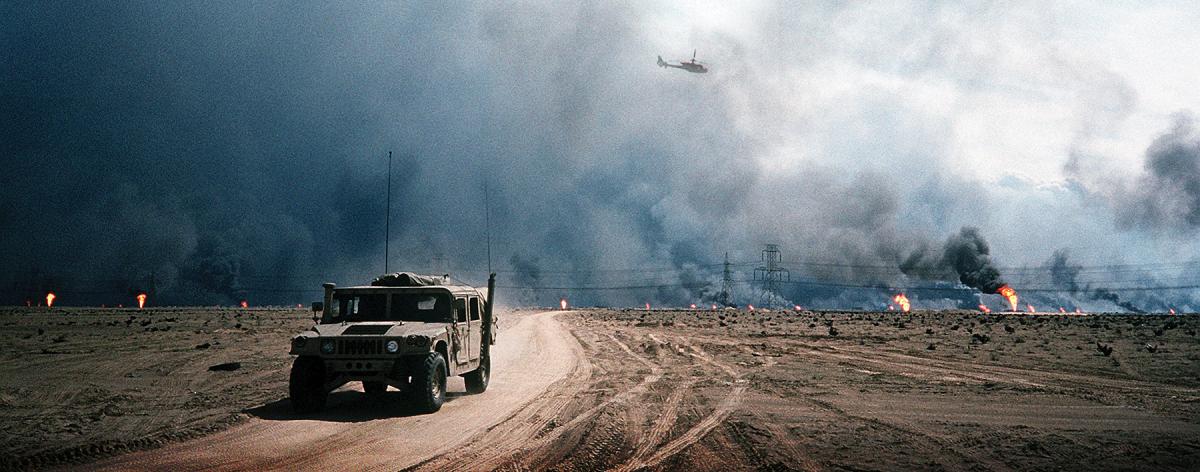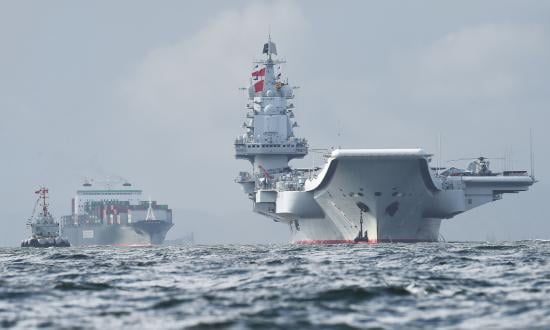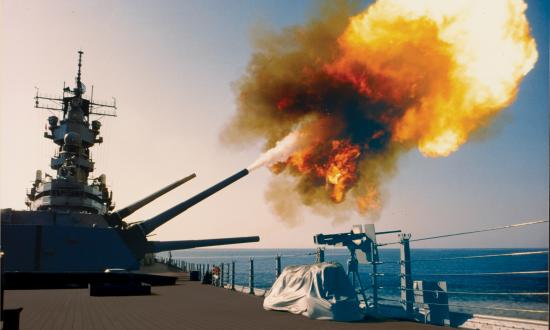Desert Shield/Desert Storm was one of the most dramatic military operations in recent history and the first U.S. war fought after World War II outside the context of the Cold War struggle. It also was the first major modern campaign fought by an all-volunteer U.S. force. It was a conflict (albeit much forgotten today) many analysts and pundits of the time doubted the United States could win quickly, decisively, and without massive American casualties.
Using the criteria of direct strategic goals, the First Gulf War can be considered the last war the United States has “won.” Subsequent interventions may have seen tactical victories, but they failed to achieve their strategic expectations. Thus, it is critical to review the strategic lessons of Desert Shield/Desert Storm and assess their continuing implications, particularly as the world has transitioned into a global security environment much more like the great power competition—more properly termed great systems competition—of the pre-1990s. What were the strategic lessons of the victory, and did the U.S. military “learn” them?
The Four Strategic Lessons of an Undisputed Victory
Whether history repeats itself, only rhymes, or merely plods, the exact circumstances of any event cannot be precisely duplicated. Common wisdom suggests no future opponent would underestimate U.S. determination as Saddam Hussein did in 1990–91. However, there are echoes of such a dismissive evaluation in the Chinese Communist Party’s (CCP’s) frequent references to the United States as a “declining power.” Nevertheless, the results of Operations Desert Shield/Desert Storm reestablished that there are at least four general principles that contribute to strategic success when U.S. military force is applied.
Strategic objectives must match the strategic effort. In other words, limited application of force will achieve limited objectives. To achieve system-changing effects—such as the transformation of Nazi Germany or Imperial Japan from warlike authoritarianism to peaceful democracies—requires unlimited or nearly unlimited means. This axiom, generated by the strategic experience of Abraham Lincoln, Ulysses S. Grant, and William T. Sherman in defeating the Confederate States, was perfected in World War II.
In setting the limited strategic objectives of Operations Desert Shield/Desert Storm, President George H.W. Bush—himself a World War II veteran—recognized that reestablishing Kuwait’s sovereignty and deterring similar naked aggression against the U.S.-led global order was the extent to which he was willing to commit U.S. military power. Ousting Saddam Hussein, imposing democracy on Baathist Iraq, or transforming the Middle East was not on the menu, because he was aware of the cost in dollars, lives, and years.
The United States must have access in and through the global commons, ocean-spanning logistics capabilities, and a network of global alliances. Without these political-economic-military capabilities, U.S. military power is largely ineffectual and uncompetitive. Geography dictates that it takes time to project a powerful military force from the continental United States. Even with a handful of fixed—potentially vulnerable—oversea bases, U.S. ground combat power has limited deterrence capability. Consequently, the Department of Defense (DoD) must prioritize naval, air, and space forces. And creating and maintaining political-military alliances and partnerships should remain a guiding principle of U.S. national security.
Antiaccess versus counter-antiaccess campaigns. The coalition force was able to build its strength over six months and unleash it as a massive wave because it had unfettered access to the region. In allowing this force build-up, Saddam Hussein squandered his only real possibility for victory.
The Iraqi military was unable to or unwisely chose not to “bar the Gulf.” Saddam seized Kuwait but—except for outright bluff—had no means to retain it. In the end, however, he was forced to wage an antiaccess campaign (albeit unsuccessfully) by threatening massive casualties and ecological disasters. Russian and Chinese military analysts assessing the First Gulf War have routinely faulted Saddam for not conducting a vigorous antiaccess campaign and preventing a lodgment of U.S. forces in the Gulf region from the start. Clearly, potential opponents have examined this model in terms of future great systems competition.
Do not commit without the firm support of the American people; and, once committed, avoid incremental escalation and win quickly with massive force. These tenets of the so-called Weinberger-Powell doctrine were validated by Desert Storm and revalidated in the wake of the subsequent interventions.
These four lessons have been learned, forgotten, and relearned in the period following Operations Desert Shield/Desert Storm. In the face of current great systems competition, whose threats dwarf those of the past 30 years, today’s military leaders must reexamine, relearn, and retain these principles. But the focus of this essay is on strategic objectives and access-gaining capabilities.
Wars Result in Limited Objectives Unless One is Willing to Be Unlimited
Contrary to the oft-repeated slogan “war solves nothing,” wars do make dramatic changes in the international political environment. The First Gulf War convinced the world of the supremacy of U.S. military capabilities and showed the erosion and collapse of the Soviet Union and its huge armed forces. The Iraqi military was modeled on Soviet doctrine and equipped with Soviet tanks, aircraft, and air defense equipment. Desert Storm/Desert Shield deterred state-on-state conflict for the next decade. The world order of the 1990s was largely characterized by international law and governed by multinational organizations and mechanisms.
However, the immediate results of Desert Storm/Desert Shield were limited, confined to the strategic objectives President Bush articulated—expel Iraqi forces and restore the sovereignty of Kuwait. The foremost long-term objective was to demonstrate that the United States would not permit invasions and forcible annexations in the post–Cold War world. Members of the Bush administration may have hoped the Iraqi public would oust Saddam Hussein or that the oppressed Shiites would revolt, but neither was a requirement for success. The goal was global deterrence, not national or global transformation.
A societal change within Iraq—including democratic governance, ethnic harmony, and voluntary disarmament—was not sought. As veterans of World War II, President Bush and his peers remembered the cost of transforming Nazi Germany and Imperial Japan—both had to be brought to the brink of destruction with means that included nuclear weapons. To transform Germany and Japan into democratic states, the Allies needed to conquer, garrison, govern, and, in effect, appoint like-minded leaders—an endeavor that dwarfed U.S. interests in the future of Iraq and would have required long-term military commitment. Those Bush advisors with Vietnam War experience were aware of the limits of U.S. efforts to create a viable, democratic country. It was enough that Iraq stayed quiet and future conflicts were deterred in other areas of the world.
A decade later, President George W. Bush’s administration forgot this lesson. They thought removing Saddam Hussein would mean a transformative victory for democracy in the Middle East. Secretary of Defense Donald Rumsfeld personified this expectation. He minimized post-war planning, created a haphazard occupation, and anticipated that minimum force would produce desirable results.
In fairness, the Clinton, George W. Bush, and Obama administrations all clung to the hope that limited demonstrations of U.S. military power could achieve more than limited results. Such was not demonstrated by the outsized Desert Shield/Desert Storm victory. And limited efforts will not achieve more than limited results in great systems competition.
Control of the Commons, the Logistics Force, and Allied Networks
Geography is the tyrant that still rules the world. The distance between U.S. Central Command headquarters in Tampa, Florida, and Kuwait City is 6,352 nautical miles—short for an e-mail; very long for a main battle tank.
Such is the nature of any foreseeable conflict. For the past hundred years—whether by historical circumstances, U.S. dominance, or luck—the Western Hemisphere has been largely a zone of peace. Positioned largely outside what geostrategists would term the “heartland” or “world island” (Euro-Asia), military forces from the Western Hemisphere need to travel thousands of miles across the oceans to reach zones of potential conflict.
If the United States hopes to deter such conflicts, prevent their expansions, support affected allies, or ensure such conflicts do not adversely affect U.S. interests, it must retain the capability to control and transit the commons without significant opposition. It must maintain an alliance network that allows it to deploy or base forces in the Euro-Asian-African regions. It requires persistent overmatch in naval, air, and space forces (which also constitute its global logistics capabilities), as well as a cooperative/collaborative foreign policy designed to maintain a tight and dedicated alliance structure.
Desert Shield/Desert Storm demonstrated these lessons in obvious ways. First, the broad coalition arrayed against Iraq included the military forces of 39 countries. Even the almost-crumbled Soviet Union of Mikhail Gorbachev gave its diplomatic support. Although many of the coalition assets were token forces (in the sense they could neither operate independently nor logistically sustain themselves without direct U.S. support), they indicated a global acceptance of the validity of the intervention and an inevitable acceptance of the U.S. primary objective: support for the rules-based “liberal” world order and deterrence of future invasions. Thus, fashioning the coalition was as important to the strategic objectives as the defeat of Saddam’s forces.
The George W. Bush administration did not heed this lesson in the second war against Iraq, in which it was content to let a vague “coalition of the willing” form as if from habit. Thus, few outside of the tightest U.S. allies saw the results as a victory for the liberal world order or in their own national interests. Without broad political support from a global alliance network, the conflict was not seen as a victory for the global system, but simply an interminable regional conflict rearranging the ruling elites.
If the United States perceives a need to confront a revanchist Russia or expansionist China in the future, it will achieve little without a tightly committed global alliance.
The logistics buildup during Operation Desert Shield—enabled by the global alliance network—was achieved with but a few scattered diplomatic efforts by Iraq to preempt it. Any Iraqi attempt to conduct the antiaccess campaign to maintain control over Kuwait was doomed. The struggle for access defines the operational future of war.
Great Systems Competition: Not Like Yesterday, But Like the Day Before
Questions remain about U.S. commitment to the great power/systems competitions that loom.
First, does the United States have the will to bear the long-term costs? It did during the Cold War, but memories of that era are fading. These costs range from national-level economics to individual injuries—some of which are hidden or unknown to a public in which most citizens never serve in the military. Thirty years after Desert Shield/Desert Storm, veterans are still struggling to overcome the debilitating health effects of what was once called Gulf War syndrome, which parallels the reaction to the health effects of Agent Orange during Vietnam. All wars have costs and effects. If they are hidden from view, they are difficult to access, accept, and mitigate.
Second, is it time to revive the draft or institute universal service? Desert Shield/Desert Storm was the first major joint operation for the all-voluntary U.S. armed forces. It was a tremendous operational success. From the perspective of readiness and training, all military leaders insist that an all-volunteer military is a superior fighting force. But can it be sustained in great systems competition? For much of the Cold War, the nation relied on the draft.
Great systems competition (and possible conflict) will not be like the interventions of the past two decades. Rather, it will be more like the Cold War and its potential kinetic conflicts more like the First Gulf War—but with vastly more competent opponents. If the United States wants to avoid inconclusive results and failed objectives, it needs to reexamine and relearn the lessons of the strategic victory of Desert Shield/Desert Storm.











